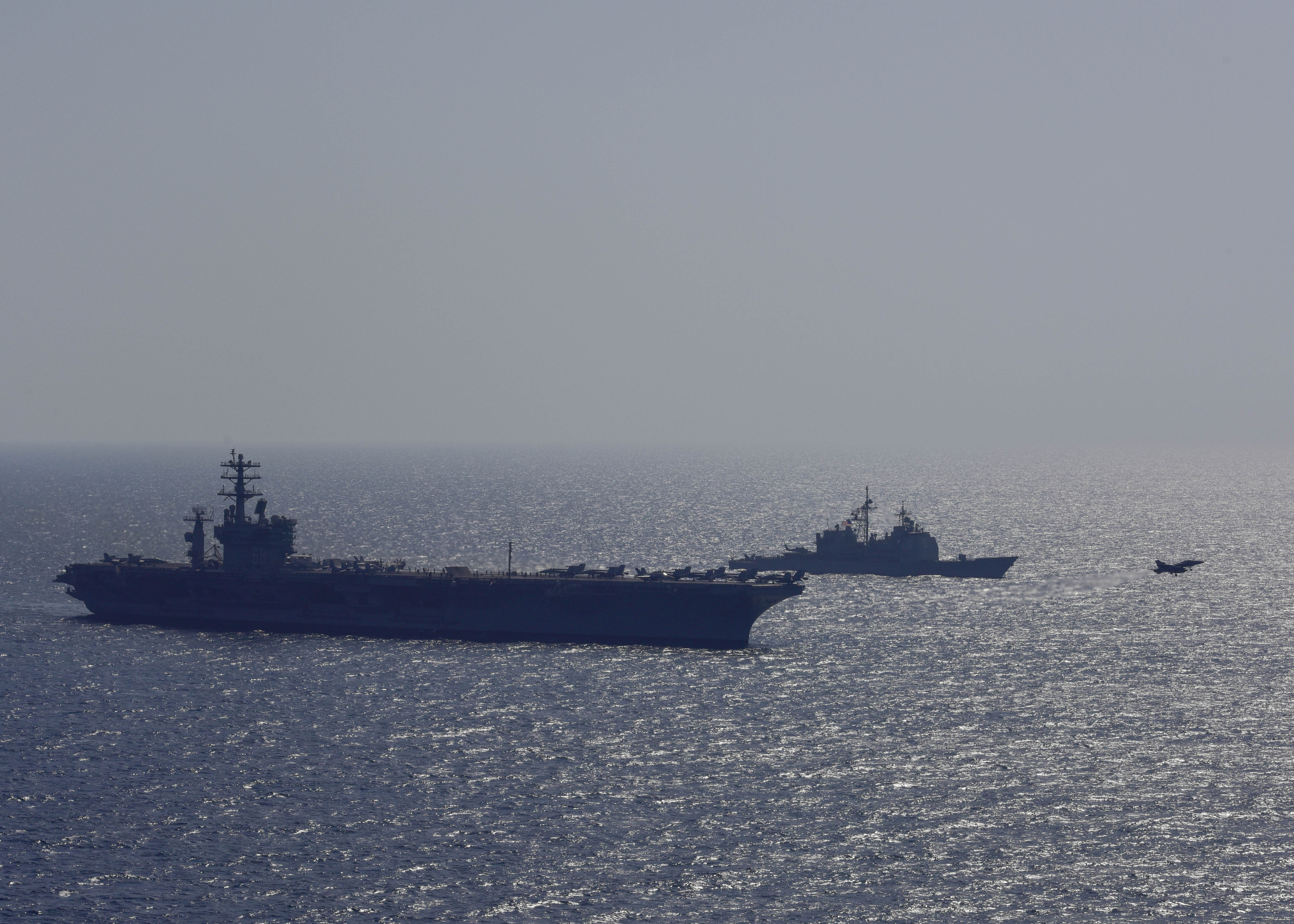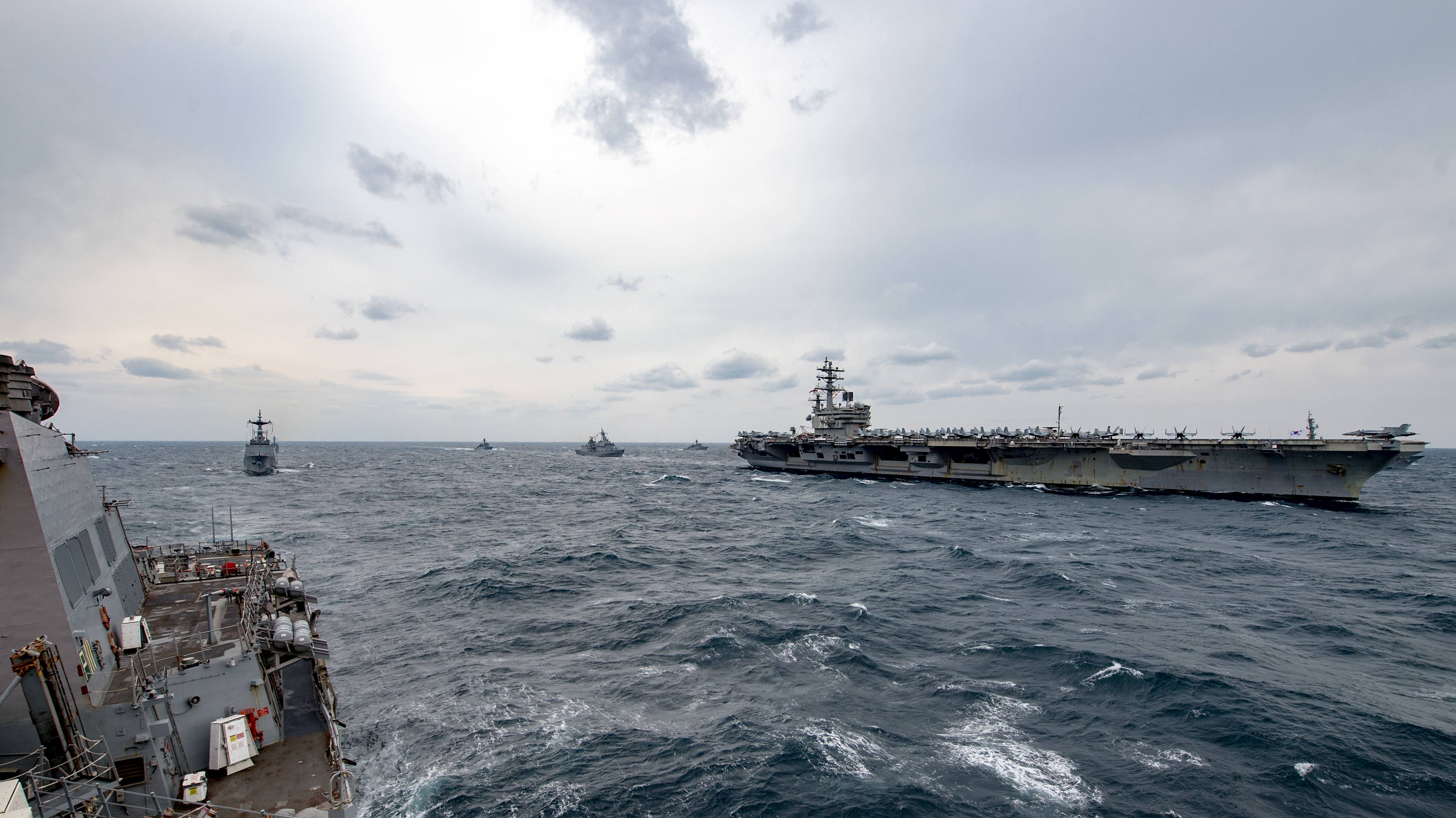
USS Nimitz (CVN-68) and the Ticonderoga-class guided-missile cruiser USS Vella Gulf (CG-72) patrol alongside each other, Oct. 20, 2017 in the Persian Gulf. US Navy Photo
Three U.S. carrier strike groups are now operating in U.S. 7th Fleet, after the strike group previously tasked with conducting air strikes against ISIS targets in Syria and Iraq has left the Persian Gulf en route to the Western Pacific, according to a statement from the Navy.
Carrier USS Nimitz (CVN-68) and its escorts left U.S. 5th Fleet on Wednesday and are homeward bound for Naval Station Bremerton, Wash. The carrier left for its deployment on June 1, and the strike group began anti-ISIS operations on Aug. 1.
Meanwhile, the San Diego-based Theodore Roosevelt Strike Group entered 7th Fleet on Monday. The strike group left its homeport earlier this month.
“Entering 7th Fleet is an exciting opportunity to integrate with other U.S. Navy units in the [area of operations], as well as operate with our partners and allies in the region,” Rear Adm. Steve Koehler, commander of Carrier Strike Group 9 embarked on USS Theodore Roosevelt (CVN-71), said in a Navy statement.
The forward-deployed carrier USS Ronald Reagan (CVN-76) and its escorts are operating near South Korea and could conduct operations with the Roosevelt strike group in the near future, according to reports in the Korean press.

The forward-deployed Arleigh Burke-class guided-missile destroyer USS Stethem (DDG-63) joins Republic of Korea Navy ships for a photo exercise with the aircraft Carrier USS Ronald Reagan (CVN-76) on Oct. 18, 2017. US Navy Photo
In late May, Reagan and the Carl Vinson Carrier Strike Group conducted the first dual-carrier operations off of the Korean Peninsula since the late 1990s in reaction to a series of provocative missile tests conducted by North Korea.
The Reagan CSG completed a series of exercises with the Republic of Korean forces and is currently in port in Busan, South Korea. The exercises have drawn a harsh rebuke from North Korea.
It’s unclear if the positioning of the three carriers in the region coincides with President Donald Trump’s upcoming visit to Asia in early November.
